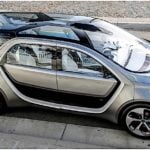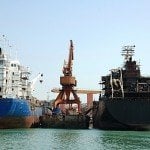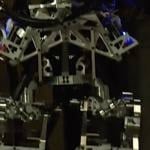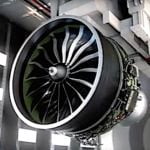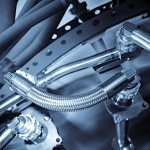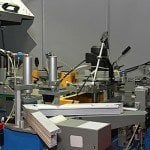A group of researchers from Korea and the United States have been working on a project designed to control superconductivity of regions within an iron-based superconductor. These superconductors have the ability to conduct electricity with virtually no resistance below a certain temperature. They also exhibit unique properties that allow them to alternate between superconducting and magnetic states.
Researchers studied a compound whose structure consisted of alternating FeAs (iron and arsenic) and Sr2VO3 (strontium, vanadium, and oxygen) layers. The compound’s magnetic and electronic properties were probed with a spin-polarized scanning tunneling microscope (SPSTM), which passes an atomically sharp metal tip over the surface of a sample.

The tip and sample are drawn to one another without touching, allowing current to flow between the two from applied voltage. The current the researchers used for the experiment is spin-polarized and therefore causes a magnetic spin that points either up or down. The compound’s FeAs layer is typically a strong superconductor, preferring a very specific magnetic order. However, the experiment showed that the spin-polarized current caused the compound to exhibit a very different magnetic order, C4 rather than the usual C2. Astonishingly, the current also appeared to switch off superconductivity altogether.
The researchers published their findings in the December 1st edition of Physical Review Letters. The paper’s corresponding author, Jhinhwan Lee, stated, “To our knowledge, our study is the first report of a direct real-space observation of this type of control by a local probe, as well as the first atomic-scale demonstration of the correlation between magnetism and superconductivity.”
The team experimented with SPSTM using an antiferromagnetic chromium (Cr) tip. The team studied the connection between C4 magnetic order and the suppression of superconductivity, performing high-resolution SPSTM scans of the C4 state with Cr tips, then comparing them with simulations. The results revealed the possibility that low-energy spin fluctuations in the C4 state cannot mediate pairing between electrons, resulting in a pairing of electrons that contradicts their natural urge to repel one another.
Lee and his researchers are enthusiastic about their findings and plans for future studies geared toward controlling superconductivity. “Our findings may be extended to future studies where magnetism and superconductivity are manipulated using spin-polarized and unpolarized currents, leading to novel antiferromagnetic memory devices and transistors controlling superconductivity.”
Lee will be discussing his team’s research and findings at McMaster University on March 22nd. “We have explored a new mechanism for switching magnetism and superconductivity in a magnetically frustrated iron-based superconductor using spin-polarized scanning tunneling microscopy (SPSTM). Out SPSTM study on single crystal Sr2VO3 bilayers shows that a spin-polarized tunneling current can switch the FeAs-layer magnetism into a non-trivial C4 order, which cannot be achieved by thermal excitation with unpolarized current. Our tunneling spectroscopy study shows that the induced C4 order has characteristics of plaquette antiferromagnetic order in the Fe layer temperature erases the C4 state.
“These results suggest a new possibility of switching local superconductivity by changing the symmetry of magnetic order with spin-polarized and unpolarized tunneling currents in iron-based superconductors. We also performed high-resolution quasiparticle interference measurements, self-consistent BCS theory-based QPI simulations and a detailed e-ph coupling analysis to provide direct atomic-scale proofs of enhancement of iron-based superconductivity due to the BCS mechanism based on forward-scattering interfacial phonons.”





